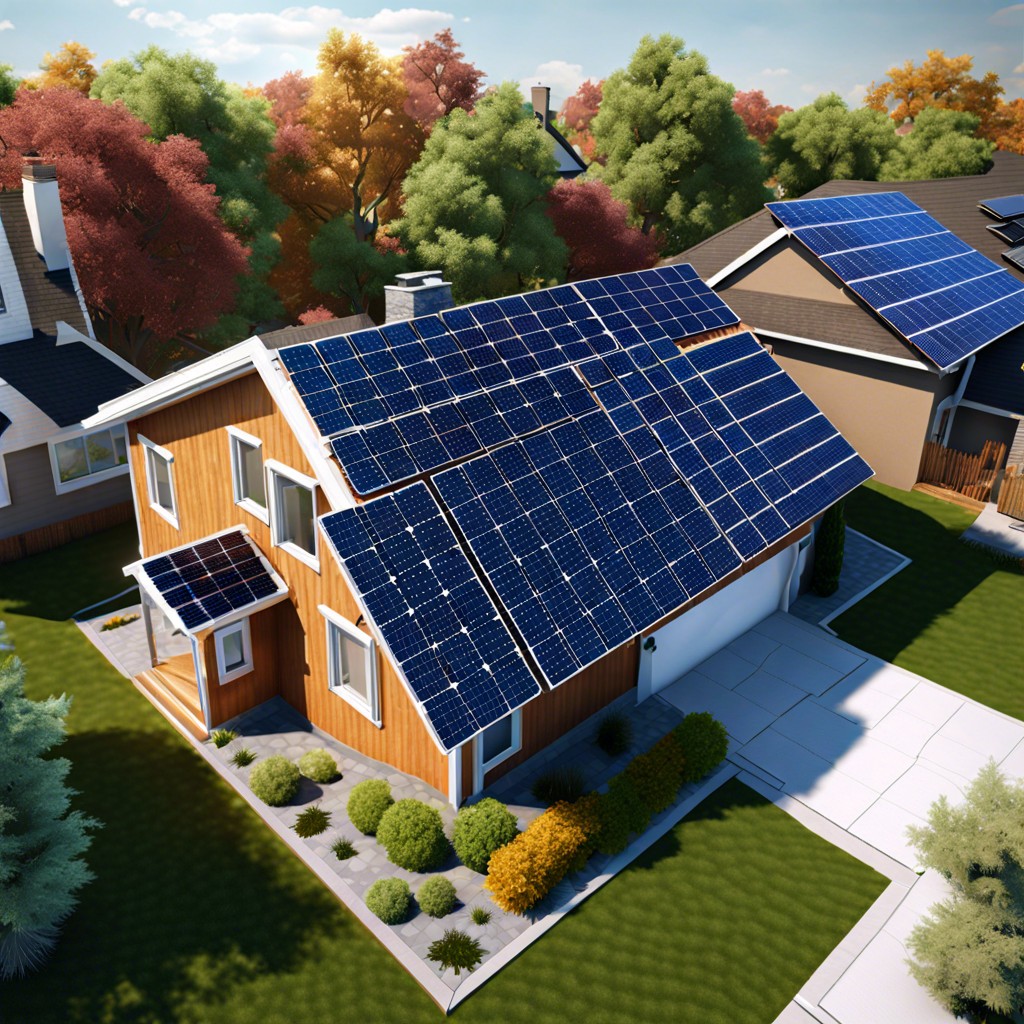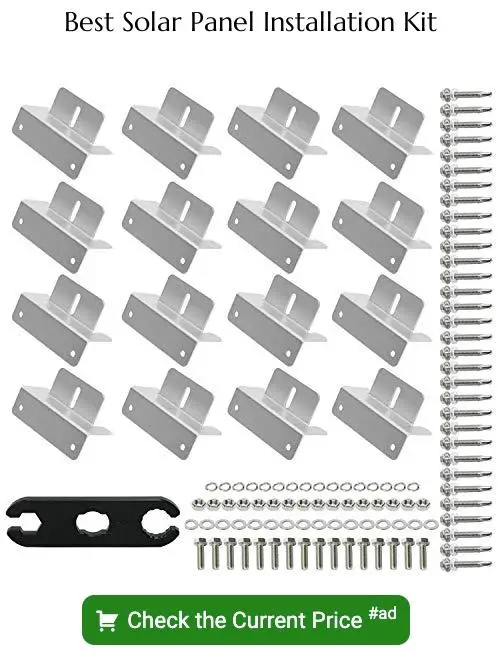Last updated on
Learn how to estimate the number of solar panels that can be installed on your roof based on size, efficiency, and environmental factors.
Key takeaways:
- Assess usable roof area, considering obstructions and shading.
- Consider solar panel dimensions and additional hardware space requirements.
- Understand local regulations, building codes, and HOA covenants.
- Estimate energy consumption and consider panel efficiency and sunlight availability.
- Evaluate tilt and orientation for optimal solar gain, considering shading and adjustability options.
Assessing Roof Size and Usable Area

To calculate how many solar panels can fit on your roof, you first need to determine the total available area. Start by measuring the length and width of your roof to get the overall square footage. However, the entire roof surface may not be suitable for solar panel installation.
Obstacles such as chimneys, vents, and skylights reduce the usable area. Additionally, areas that receive significant shading from trees or surrounding buildings are not ideal for solar panels, as shaded areas can significantly reduce the efficiency of your solar array.
The roof’s condition is also a crucial factor to consider. Solar panels have a lifespan of about 25-30 years, so it’s important that your roof is in a condition to last at least as long as the solar panels themselves. If your roof requires repair or replacement within the next few years, it’s best to address these issues before installing solar panels.
The pitch of the roof influences not only how many panels can fit but also how they will be mounted. Steeper slopes might limit the number of panels but sometimes can enhance solar efficiency depending on the orientation and angle to the sun. Conversely, flat roofs may allow more panels but may require additional mounting equipment to angle the panels correctly.
Taking all these factors into account will give you a realistic estimation of the usable space on your roof for solar panels. Professional solar installers can provide precise measurements and advice, ensuring that roof obstructions, pitch, and condition are factored into your solar project planning.
Understanding Solar Panel Dimensions
Solar panels come in various sizes, with common residential panels typically measuring about 65 inches by 39 inches. These panels generally have a power output ranging from 250 to 400 watts, depending on the efficiency and the technology of the solar cells used.
To calculate how many panels you can fit on your roof, start by determining the total area of your rooftop that’s suitable for solar installation. Subtract any areas that are not usable due to obstructions like chimneys, vents, or shaded regions.
With the usable space in mind, consider the size of the solar panels you are interested in. The standard size will guide you in estimating how many panels can physically fit in the area. Be aware that along with the panels themselves, you must accommodate additional hardware, such as mounting racks and a small buffer around the system for maintenance access.
Lastly, while maximizing the number of panels might seem advantageous, it’s crucial to balance quantity with optimal placement. Panels installed too tightly may suffer from reduced performance due to overheating. By understanding the dimensions and considering these factors, you’ll be equipped to make educated decisions about potential solar installation arrangements.
Analyzing Local Regulations and Limitations
Before finalizing any plans to install solar panels, it’s crucial to familiarize yourself with the building codes, zoning laws, and any homeowner association (HOA) covenants that may impact your project. These regulations can affect the number and type of solar panels you can install.
Local building codes may dictate how far panels must be set back from the edge of the roof and any required paths for firefighters. These codes ensure safety and accessibility for maintenance or emergency services and may limit the space available for solar panels.
HOA covenants or municipal zoning laws might impose aesthetic guidelines or limitations on visible modifications to properties. In some cases, they may restrict the height of structures, which could influence the type of mounting system you can use for your solar panels.
Incentives and permitting processes differ by location, too. Many regions offer tax breaks, rebates, or other incentives for solar panel installation, which requires understanding the specific application procedures.
Lastly, assess the permitting requirements. They often involve submitting your installation plan for approval, which can include a site plan or detailed diagrams. Knowing these requirements upfront can save you time and ensure that your installation moves forward without delay.
Navigating the tapestry of local regulations early on is a step that cannot be overlooked. Doing so ensures that when you’re ready to install solar panels, the process will proceed smoothly, compliantly, and in a neighborly fashion.
Estimating Energy Consumption and Needs
To precisely determine how many solar panels you need, start by reviewing your monthly energy bills to calculate your annual electricity usage; this figure is typically expressed in kilowatt-hours (kWh). A residential household in the United States, on average, consumes about 10,649 kWh per year.
Next, consider the efficiency of available solar panels. Panels with higher efficiency require less space to generate the same amount of power, but they may come at a higher cost. For instance, if a standard panel generates 320 watts, you’ll need more of these than if you opt for high-efficiency panels that produce 400 watts each.
It’s important to also account for the geographic location of your home. Sunlight availability varies by region and will impact the number of panels needed. Homes in sunny areas like Arizona may require fewer panels compared to those in less sunny states like Oregon.
Lastly, ponder future changes in your lifestyle or home that could alter your energy consumption, such as adding an electric vehicle or upgrading to more energy-intensive appliances. Planning for these potential adjustments ensures that your solar panel system will meet your energy needs over time.
Evaluating Tilt and Orientation for Optimal Solar Gain
The angle at which solar panels are installed, commonly referred to as tilt, can significantly influence their efficiency. To capture the maximum amount of sunlight, panels should be angled to face true south in the Northern Hemisphere and true north in the Southern Hemisphere. The optimal tilt angle is typically close to the latitude of the installation site.
Shading is another crucial factor when positioning panels. Nearby buildings, trees, or other obstructions that cast shadows during the day can greatly reduce energy production. Monitoring the path of the sun throughout the year helps identify potential shading issues.
While a fixed tilt is most common, some systems use adjustable mounts to change the panel angle in accordance with seasonal sun positions, maximizing irradiance capture. However, adjustable mounts add complexity and cost to the overall system.
In urban environments or homes with limited roof space, maximizing orientation and tilt may not be possible. In these cases, installers can employ other strategies, such as using higher efficiency panels to ensure energy needs are met despite sub-optimal conditions. It’s a delicate balance between maximizing solar gain and adapting to the practical constraints of each unique rooftop.





